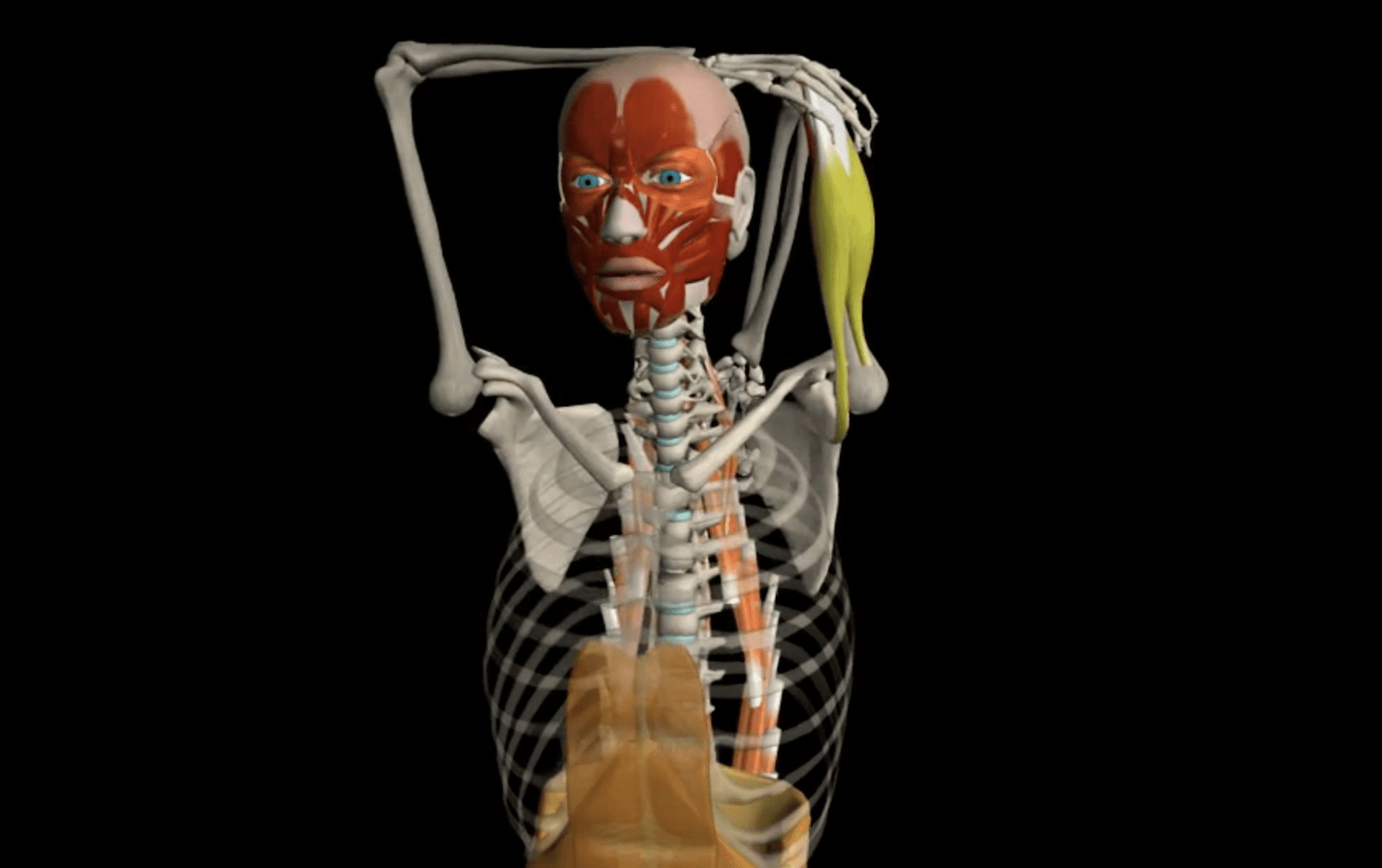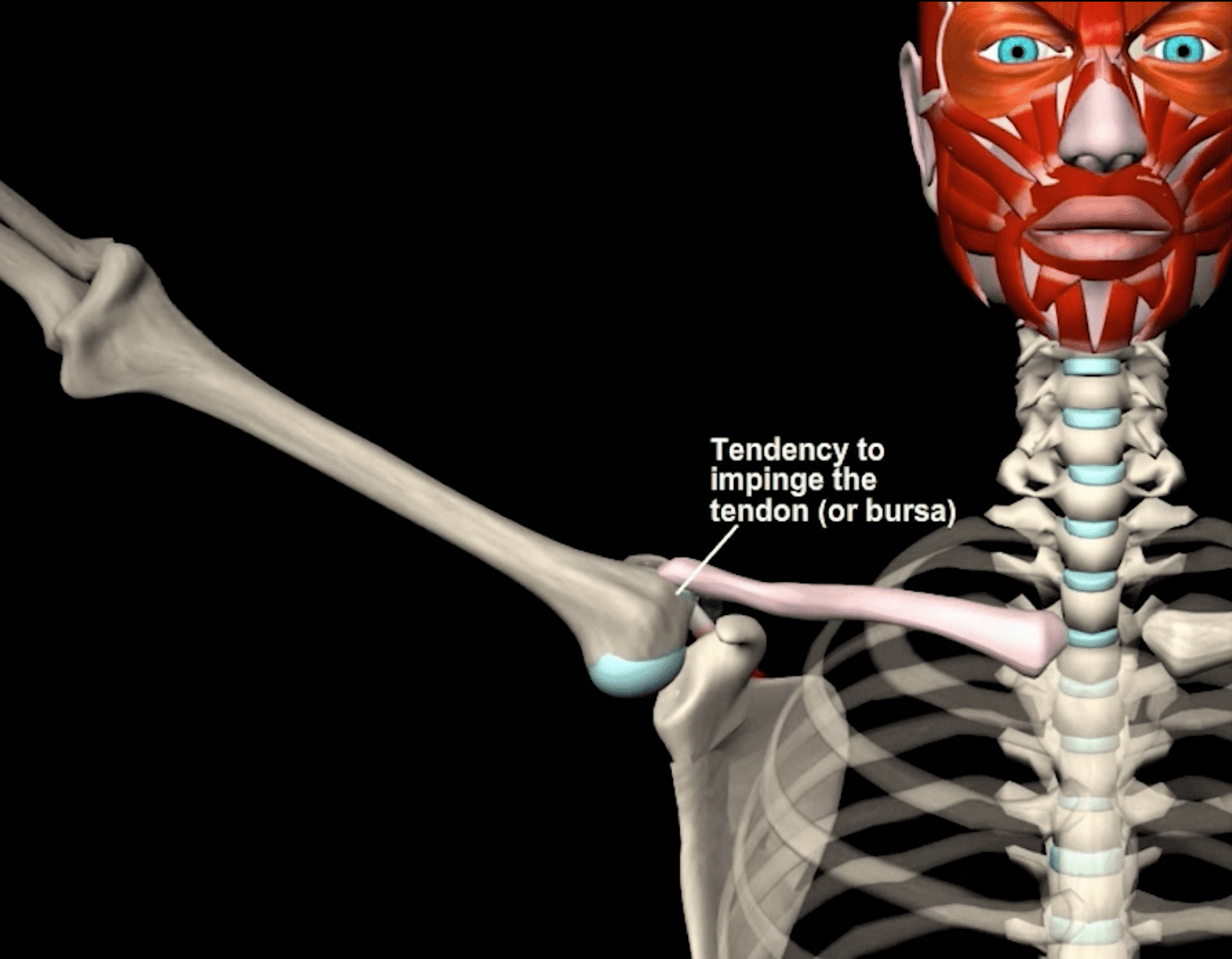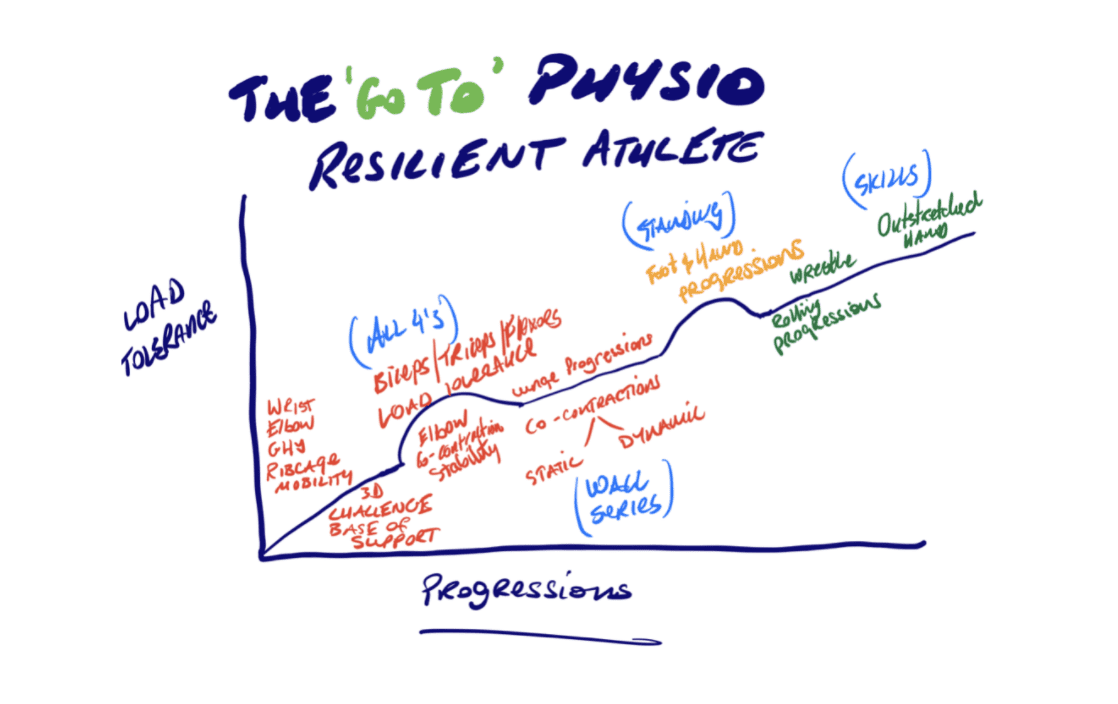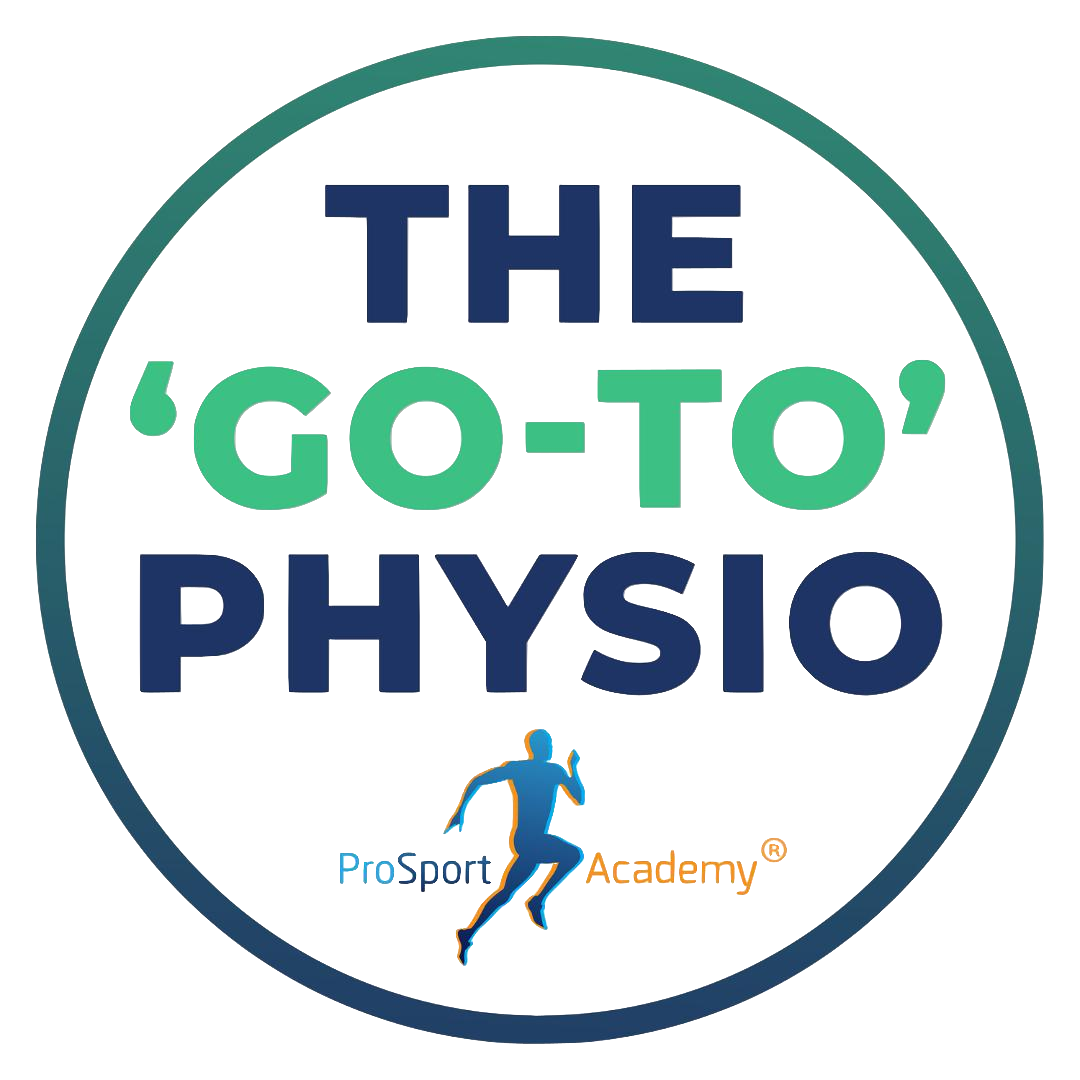
Tricky shoulder pain cases can be some of the most demanding. You try exercises, see some results, and think you’ve cracked it. But the next session rolls around and the pain is back. Today I want to show you how to avoid these errors that cost you referrals and revenue.
Throughout my 13 years experience in professional sports and private practice, I have seen hundreds of these shoulder cases. At the start, I felt powerless. It wasn’t until I began to really look at the patient journey that I saw myself and my clinic grow.
It all comes down to having the confidence and clarity to bridge the gap between lower and higher-level rehab. This is the only way you can set your patient and your clinic up for success. In this article, I’ll give you some powerful tools to help you on the way to bridging that gap.
Read this page, watch each video and find the best shoulder impingement exercise to implement immediately.
Considering The Rotator Cuff
Before I tell you the exact exercises I use to get results with my complex shoulder pain cases there are a few issues we should touch on. Firstly, the term shoulder impingement itself.
Every therapist knows how shoulder impingement occurs. As your patient brings their arm up to shoulder height the space between the acromion and rotator cuff becomes smaller causing impingement of the tendons. In reality, the fault may not lie with the glenohumeral joint, tendons or rotator cuff at all. The research and health information journals suggest there is far more at play.
This scenario or potential rotator cuff tears could still be the case but if you want real long-lasting results then you cannot think of this as purely a structural problem. The one thing you must understand is that shoulder pain and all pain is multifactorial.
This is good news for your patients. It means there so many different methods you can use to help them live a pain-free life. But as a therapist, this idea can seem overwhelming. If you can help 99.9% of shoulder cases that walk through your clinic door then you have nowhere to hide. Your reputation hangs on results.
Throughout my experiences in clinical practice and professional sport, shoulder injuries aren’t always clear-cut. At times, athletes have come back from the training field with shoulder pain or injuries, they perform poorly in the clinic, I send them to a doctor for an MRI, only for the shoulders and surrounding muscles to appear fine. Other times there has been no symptom or inflammation but the MRI shows damage.
Now, this is some good news for you as a therapist. It means that you can see results even if there is potential damage without even thinking of surgery.
Do not misunderstand. You must not forget about the rotator cuff. But you should begin to work smarter not harder. If the research tells us there is far more at play with your complex shoulder pain patient, then ask yourself, what could possibly be happening?

Using The Go-To Physio 80/20 Rule With Shoulder Impingement Cases
In the Go-To Physio Mentorship we use the 80/20 rule to divide up our time. We respect pathology and symptoms but only spend 20% of your time focusing there. Then, spend 80% of your time looking at the whole body, getting everything to do its job and showing the nervous system that it is safe to tolerate load.
Every therapist has their own preferences when it comes to treating a shoulder impingement. It seems on every social media website and everywhere you look, people are using doorframe or doorway exercises trying to influence the complex tissues that surround the shoulder, arm, or shoulder blade. Of course, they have their place but you must think, how does this movement fit with your patient’s story?
In each video below, you’ll find a series of powerful exercises that will precisely target tissues that must go through a full range of motion in order for the shoulder and arm to be successful.
Remember, do not perform all of these and hope for results. These exercises are only one small part of your treatment plan. They will only ever be effective if coupled with the information you collect in your subjective assessment and a rock-solid step-by-step system. You must put yourself in the best possible position to get to the bottom of your patient’s issue, find the true cause of the symptoms and help reach their goals.
Now, let’s dive into the best shoulder impingement exercises of 2021 and beyond….
Upper Limb Weight Shift – Bicep and Pectoralis Stretch
The role of the diaphragm and pelvic floor muscles seems simple, right?
Well, there is far more to these two than most people think… One of their most important features is the way they function together and with the rest of the body.
If you study them both, you’ll quickly realise they are core muscles…
They work together with other abdominal muscles and back muscles, offering core stability, support to the spine, and control over posture.
Upper Limb Weight Shift – Bicep and Pectoralis Stretch
Once you have restored the range of motion with the last stretch you must continue to progress through your graded exposure programme, increasing load tolerance in these tissues.
This exercise in particular puts the biceps in the position in which the nervous system has no choice to load. In focusing attention on the fingertips a reaction takes place through the whole arm, the long head bicep, deltoid, and the rest of the shoulder and rotator cuff tissues.
Bicep Load Tolerance At High-Speed Movement
Your graded exposure isn’t all about tolerating loads. You must set your patient up for success by preparing them to perform these movements safely at speed.
The key here is to rotate the arm through the movement, so their index finger will point down toward the floor. You can see the importance of the long head bicep to lengthen to allow this motion.
Kneeling Tricep Stretch
As we know the tricep attaches to the scapula or shoulder blades. Whether you’re looking at the stability of the shoulder blades, arms, or shoulder joint, the long head tricep must be able to lengthen.
Desensitising the triceps and allowing them to lengthen will assist the shoulder through a full range of motion.
Throughout this exercise remember to keep the spine straight and push for the arm curl, fully lengthening the tricep.
Loading Through The Tricep
This exercise is designed to further the ability to tolerate load through the tricep. With this wall tap, you are challenging the base of support, creating perturbations and allowing the long head tricep to accept loading.
Posterior Direction Triceps Loading Pronation Supination
This is an incredibly powerful exercise to assist with loading and work both the muscles around the shoulder blade and rotator cuff.
Keep the intent through the fingertips, do not allow the wrist to flex, and keep the bicep in a forward position.
Triceps Load Tolerance At High Speeds Of Movement
If the previous exercises focused on load tolerance then this particular movement focuses on the speed of the movement.
With the movement shown in the video, your patient should build tension through the fingertips, getting positive co-contractions at the elbow and loading at the wrist, and increasing speed to challenge coordination.
Rib Cage Mobility & Serretus Anterior Stretch
The rib cage is something I come back to time and time again. In previous articles and my free diraphragm PDF I have covered its importance to your patient’s success. It also has a crucial role to play here.
To allow free movement of the shoulder and arm the rib cage must be able to go mobilise. But you have to ask yourself, what needs to happen to help the rib cage go through a full range of motion?
In this exercise we are protracting the rib cage and mobilising it in the frontal and transverse plane, stretching the left serratus anterior.
Bridging The Gap With Complex Shoulder Impingement Cases
Now you have these exercises you can begin to implement them immediately. Start by using them as key performance indicators. These KPIs act as tracking technologies to collect data. Refer back to that data and you’ll know exactly when to progress or regress with your patients.
Ultimately, you still have a long way to go. You must keep the gains and keep your patient progressing, preparing them for their goals and real-world activities. The only way you can do this is by bridging the gap between the lower and higher-level rehab.

Final Thoughts On The Best Shoulder Impingement Exercises
These exercises are a key part of your treatment but unless you master each skill from the subjective assessment to strength and conditioning then it will only ever cost you that reputation as the go-to therapist.
If you need more help getting real-world results or more information on how to bridge the gap between lower and higher-level rehab with every single patient, click the link below, book a FREE 30-minute strategy call, and set your clinic up for success.



